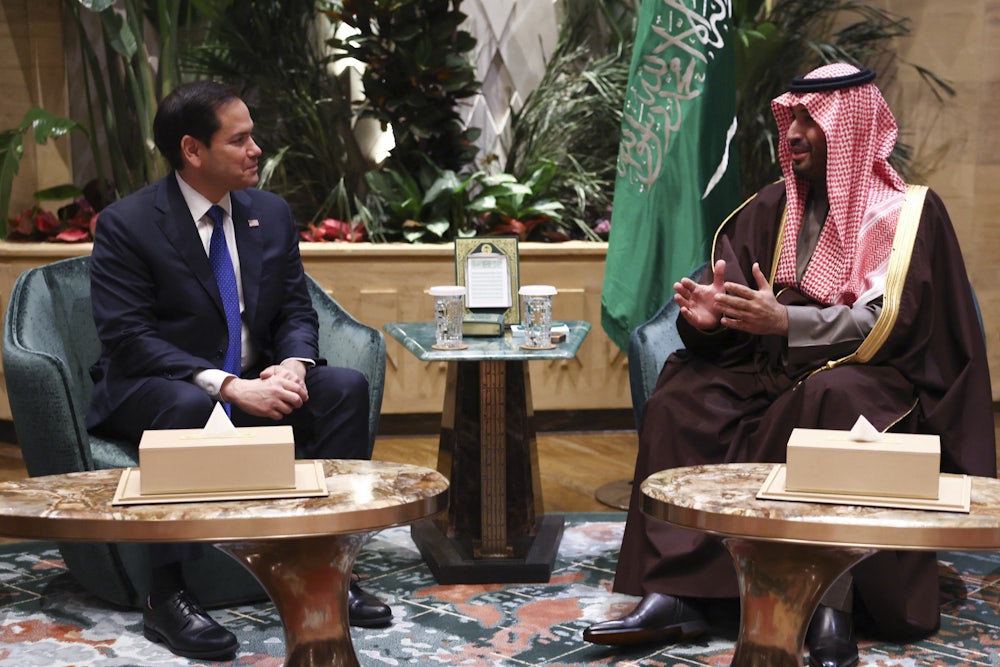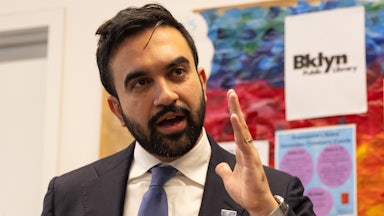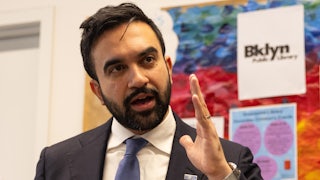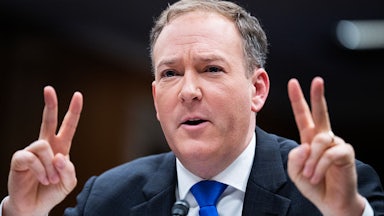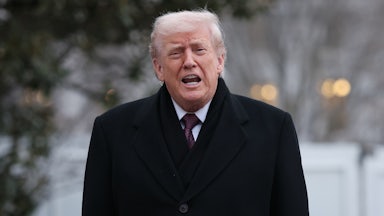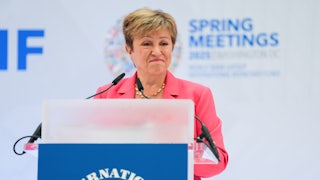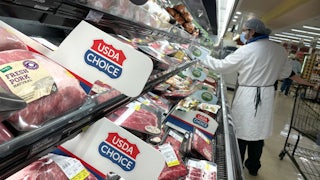If you blinked, you may have missed the way Saudi Arabia’s utopian economic diversification program known as Saudi Vision 2030 has been unofficially rebranded “Vision 2034,” named for the year Saudi Arabia will host the World Cup. Greenwashing—a term for companies or organizations portraying themselves as more sustainable than they really are—is on its way out, and “sportswashing” is in. As the price of oil plummets and the international community adjusts to American leadership that couldn’t care less about climate or the environment, the 2017-era vision of an environmentally conscious new Saudi Arabia is looking like a pipe dream. Instead of promising the world it’s turning into a cross between Silicon Valley and the luxury resort space station from the movie The Fifth Element, the desert kingdom seems to be looking at expanded oil production and a pivot to plastic.
“You won’t see a sudden press conference in the ad where they say, well, we’ve made a mistake,” Kristian Coates Ulrichsen, a fellow for the Middle East at the Baker Institute, told me, when I asked about the Vision 2030 goals. “But it will be made obvious that these are being trimmed down, scaled back.”
According to F. Gregory Gause, visiting fellow at the Middle East Institute, Saudi Vision 2030 was conceived as “an effort to kick-start some changes in the economy, and I think that in that sense it’s been a success. Are they going to get to the vision? No, they’re not.”
Ellen Wald, author of Saudi, Inc., noticed positive results from Vision 2030—mostly visible from inside the country. “There have been some changes, particularly in the way that the ministries have functioned.” It has also gotten the Saudi population excited about the future, she said, “especially the young population.”
But if you noticed outlandish levels of hype about a green future kicking off in Saudi Arabia, you weren’t hallucinating. For instance, back in 2016, before he was officially crown prince of Saudi Arabia, Mohammed bin Salman said, amid Vision 2030’s announcement, “I think in 2020 we can live without oil.” Now it’s 2025, and Saudi Arabia and other OPEC+ members are in the process of unwinding voluntary oil production cuts that have been in place since October 2022—adding a planned 411,000 barrels per day starting in May.
At first glance, Saudi Arabia’s latest plan for reshaping global oil markets looks a little like economic self-harm. “Saudi Arabia’s next move could hit oil prices hard,” the title of an article on OilPrice.com fretted earlier this month.
Indeed, this increase has been depressing price predictions on a barrel of oil—hitting Saudi Arabia right in a major pain point at a time when it needs money. The International Monetary Fund says that as Saudi Arabia continues to throw Vision 2030 money around, it should expect to double its budget deficit if oil price trends continue. Saudi Arabia needed oil to trade at $90 a barrel to break even, and it’s been trading in the $60s instead.
Wald, however, believes a focus on the break-even price of oil paints a deceptive picture. “Saudi Arabia can tolerate prices that would cripple its neighbors,” she said, noting that Aramco can produce oil for under $6 a barrel, as compared to fracking operations in the United States that are far more expensive. “They can also access debt, and they’ve been very successfully doing that,” she added of Saudi operations.
The nation is four and a half years from the theoretical finish line for Saudi Vision 2030. Vision 2030’s marquee project, the famously quixotic, hi-tech eco-oasis of NEOM—the one that’s supposed to feature a 110-mile horizontal skyscraper called “The Line”—axed its CEO last year due to setbacks and delays, and at long last named a permanent replacement earlier this week.
For what it’s worth, NEOM does have residents, but even the ones who seem content there appear to mostly spend their time getting shuttled and golf-carted around a shadeless collection of dorm buildings in one of the world’s hottest deserts—just about the furthest possible thing from the shimmering, carbon-neutral, car-free indoor megacity that was promised.
To some, Saudi Arabia’s pivot seems like a calculated and deliberate recalibration. “Most of the recent OPEC+ maneuvering is clearly, I think, based with the White House in mind,” said Coates Ulrichsen.
And as of this writing, the current occupant of the White House has cheap oil on his mind. “Gas and grocery prices are WAY DOWN, just like I said they would be,” President Trump wrote Thursday on Truth Social. The previous day, his Interior Department rolled out “emergency permitting procedures” aimed at cutting red tape in the way of oil and gas extraction on federal land. And despite a busy month of travel during which he must visit Rome for the funeral of Pope Francis—and might, he says, swing by Russia to chat with Vladimir Putin—he will definitely find time to drop by Saudi Arabia.
Trump has been “agitating for $50 oil ahead of the summer driving season in the U.S.,” Jim Krane, research fellow at Rice University’s Baker Institute, told me. Meanwhile, Saudi Arabia appears to be positioning itself to benefit from relatively mild Trump tariffs. According to a story this week from Digitimes Asia, Lenovo, HP, and Dell are suddenly moving forward with plans to manufacture P.C.s in Saudi Arabia—probably at least in part because Saudi Arabia’s new U.S. tariffs are 10 percent, compared to China’s 245 percent.
In fairness, a manufacturing push is in keeping with some of the less flashy elements of Saudi Vision 2030. On the published list of strategic objectives for the program, “localize promising manufacturing industries” is the second item. But despite P.C. manufacturers dipping their toes into Saudi Arabia with relatively minor projects, don’t expect to see “assembled in Jeddah” stamped on your iPhone anytime soon. Manufacturing titan Foxconn mulled a $9 billion plant in Saudi Arabia three years ago but doesn’t appear to have pulled the trigger.
Instead, the kingdom’s real potential manufacturing revolution may revolve around goods that are banal by comparison: petrochemical derivatives and plastics. The Saudi Basic Industries Corporation, which makes petrochemicals and plastics, has been, according to Coates Ulrichsen, “one of the most successful examples of a Saudi diversification initiative.” He suggested that doubling down in this area would make more economic sense in a pinch than “massive new experiments and creating futuristic cities.”
And holding onto its plastic production revenue is clearly a priority. Late last year, 170 U.N. member countries held a conference in Busan, South Korea, attempting to form a binding treaty on reduction of plastic waste. According to accounts in The New York Times, the Saudi delegation slow-walked and obstructed the proceedings with unnecessary objections. No deal was made, which is certainly good news for a nation hoping to see its plastic manufacturing ramped up.
“The Saudis are making decisions based on their own self-interest, but any country does that,” said Ulrichsen. At the same time, they’re quietly starting to “acknowledge that the risk of over-promising is under-delivering.”
With the likes of Cristiano Ronaldo handing your country propaganda victories by telling the world how much he loves living there, and a summer revenue spike setting you up for a short-term economic victory, who needs stories about a beautiful utopia? There are plenty of shiny objects here in the real world that can keep investors distracted from how small and sad the future has become.
